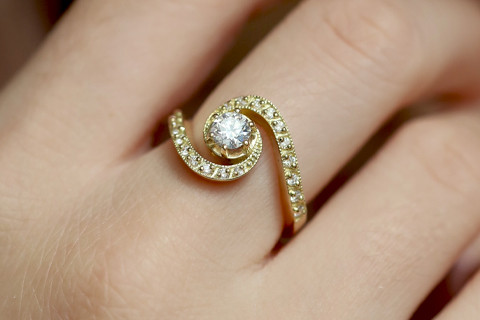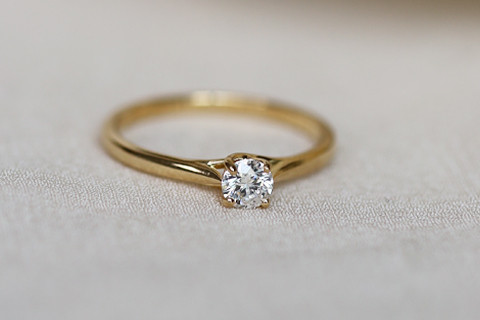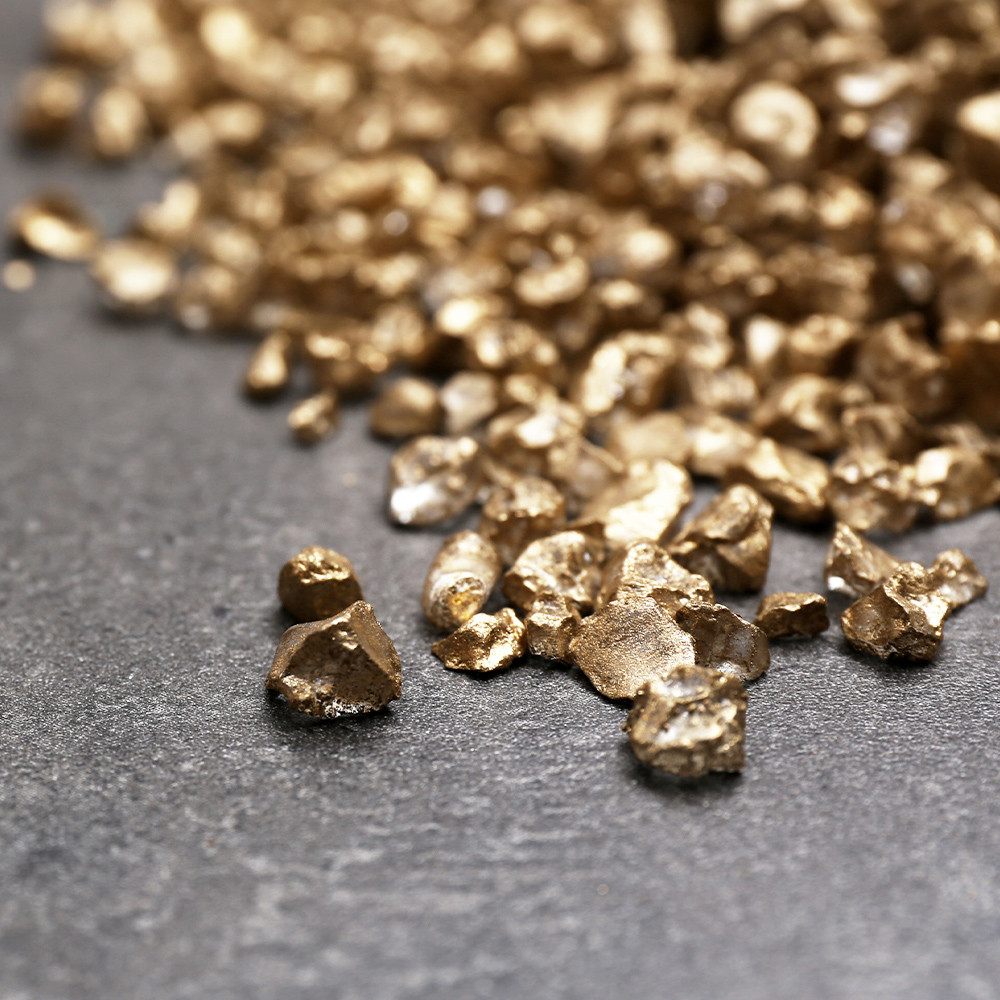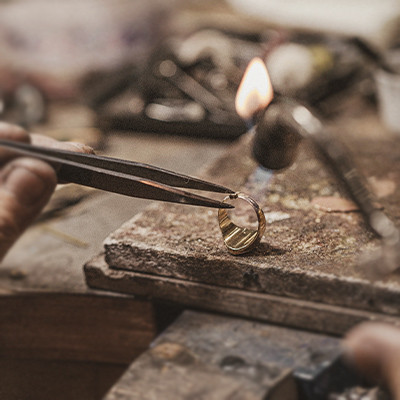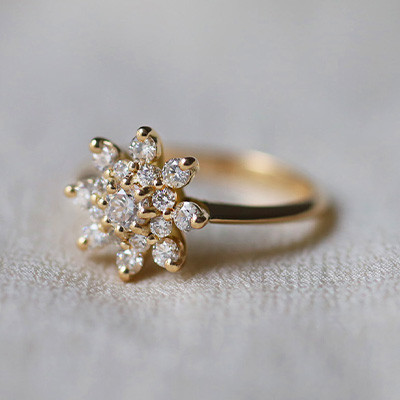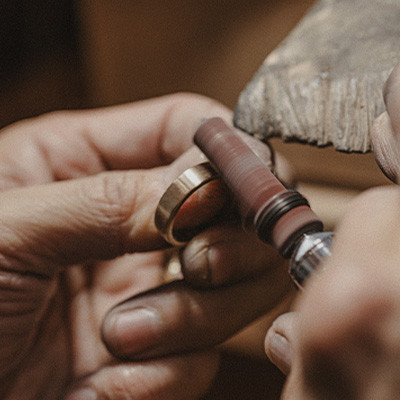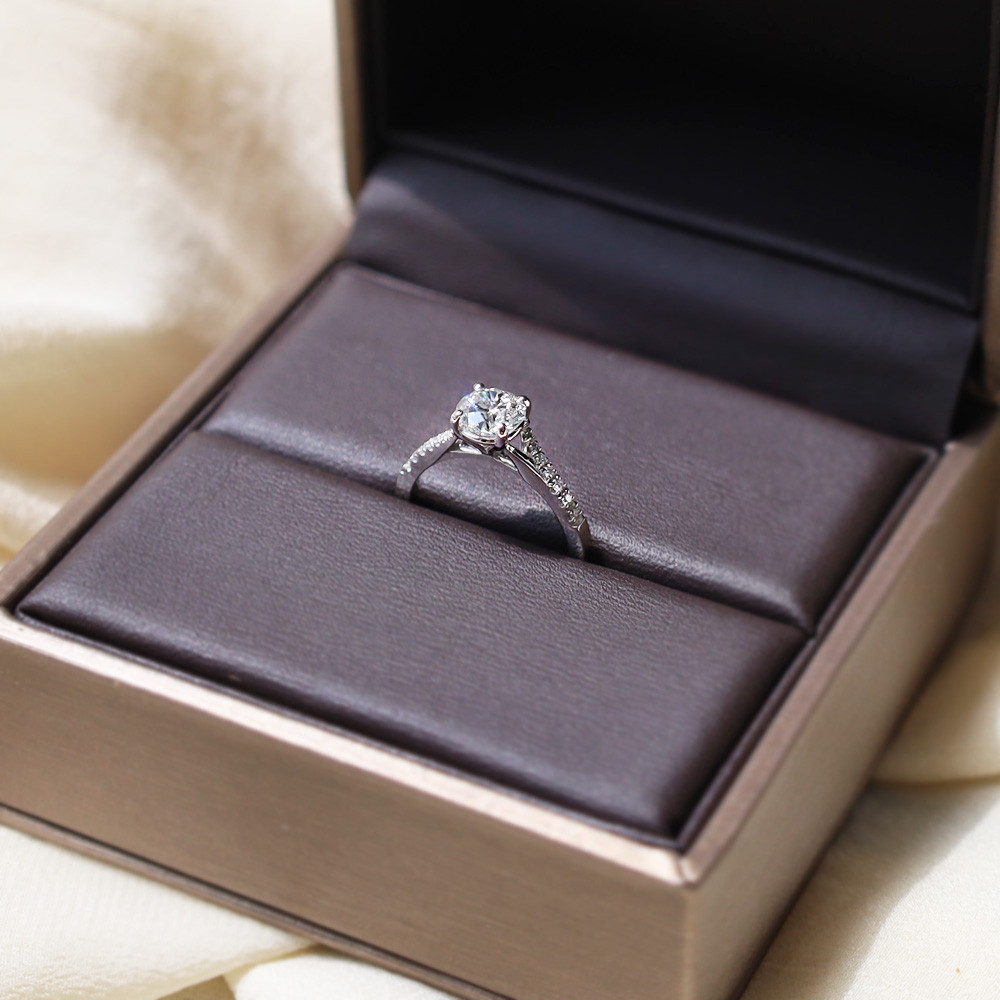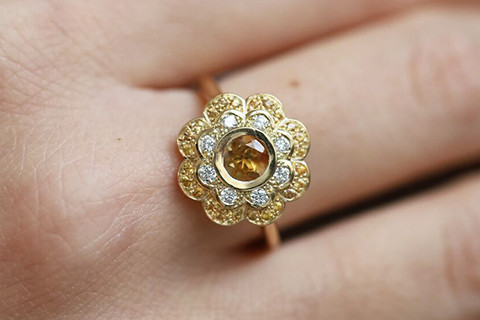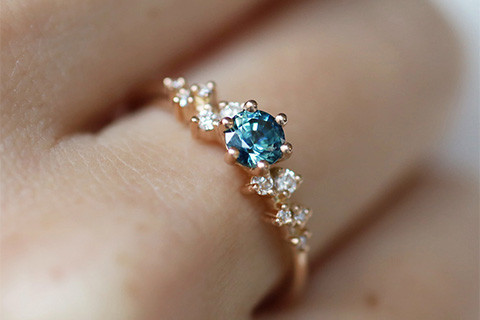Our green gems


.
G E M M E S
December 22, 2023 by Aloès
What green stones exist?
Dive into the world of gems!
.
Here's an article specially dedicated to green gems! These gems embody natural beauty, revealing captivating nuances, unique characteristics, varied provenances, intriguing specificities, particular meanings and symbolism. Which gems and stones are green? Explore this vibrant palette of shades of green and discover more about emerald, green sapphire, green tourmaline, peridot and tsavorite garnet... Each of these stones can be set in the jewel of your choice!




THE EMERALD
Emerald owes its name to the Greek smaragdos, from a word meaning "to shine". Like diamonds, rubies and sapphires, emeralds are widely used in jewelry. Emerald belongs to the beryl family, from the ancient Greek word beryllos.
THE EMERALD
Emerald owes its name to the Greek smaragdos, from a word meaning "to shine". Like diamonds, rubies and sapphires, emeralds are widely used in jewelry. Emerald belongs to the beryl family, from the ancient Greek word beryllos.
Features
The hardness of emeralds ranges from 7.5 to 8/10 on the Mohs scale. This means they can be set and worn every day, but care must be taken not to expose them to thermal shock, as emerald is more sensitive than sapphire or ruby. Emerald is recognized not only by its characteristic color, but also by its distinctive inclusions: "emerald gardens". These settle during the stone's natural growth; there is no such thing as "pure" emerald. It is undoubtedly one of the gems with the greatest number and variety of inclusions, all the more so as lapidaries fill these inclusions with a process known as oiling. Emerald is also subject to chatoyancy and asterism, which can be revealed by cabochon-cutting. Like all gemstones, emerald is expressed in carat units of weight.
Shades of color
Emerald owes its distinctive green color to a mixture of chromium and vanadium. When an emerald has a perfect balance between these two components, and very little iron, the stone has a pure green color. It is these emeralds that are the most prized and expensive on the market. If an emerald does not contain enough of one of these two components, it can tend towards yellow. In this case, the gem is referred to as green-yellow beryl rather than emerald. What's more, an emerald containing a significant amount of iron will have a blue tinge, giving the stone a darker shade of green.
Features
The hardness of emeralds ranges from 7.5 to 8/10 on the Mohs scale. This means they can be set and worn every day, but care must be taken not to expose them to thermal shock, as emerald is more sensitive than sapphire or ruby. Emerald is recognized not only by its characteristic color, but also by its distinctive inclusions: "emerald gardens". These settle during the stone's natural growth; there is no such thing as "pure" emerald. It is undoubtedly one of the gems with the greatest number and variety of inclusions, all the more so as lapidaries fill these inclusions with a process known as oiling. Emerald is also subject to chatoyancy and asterism, which can be revealed by cabochon-cutting. Like all gemstones, emerald is expressed in carat units of weight.
Shades of color
Emerald owes its distinctive green color to a mixture of chromium and vanadium. When an emerald has a perfect balance between these two components, and very little iron, the stone has a pure green color. It is these emeralds that are the most prized and expensive on the market. If an emerald does not contain enough of one of these two components, it can tend towards yellow. In this case, the gem is referred to as green-yellow beryl rather than emerald. What's more, an emerald containing a significant amount of iron will have a blue tinge, giving the stone a darker shade of green.
Provenance
The most important emerald deposits are located in Colombia, Brazil, Zimbabwe, Zambia, South Africa, Afghanistan, India, Madagascar, Mozambique, Pakistan... Common and abundant, emerald's rarity and therefore its price are determined by the intensity of its characteristic green color and its purity.
Provenance
The most important emerald deposits are located in Colombia, Brazil, Zimbabwe, Zambia, South Africa, Afghanistan, India, Madagascar, Mozambique, Pakistan... Common and abundant, emerald's rarity and therefore its price are determined by the intensity of its characteristic green color and its purity.

LE SAPHIR VERT
Sapphire takes its name from the Latin word "sapphirus", itself derived from the ancient Greek "he sappheiros" meaning "precious stone". Green sapphire is a gemstone belonging to the corundum family; it can be any color except red, which is referred to only as ruby. In recent years, there has been a growing demand for a blue/green sapphire called "Teal Sapphire".
LE SAPHIR VERT
Sapphire takes its name from the Latin word "sapphirus", itself derived from the ancient Greek "he sappheiros" meaning "precious stone". Green sapphire is a gemstone belonging to the corundum family; it can be any color except red, which is referred to only as ruby. In recent years, there has been a growing demand for a blue/green sapphire called "Teal Sapphire".
Features
Sapphire has a hardness of 9/10 on the Mohs scale, placing it just below diamond and on a par with ruby. It is therefore a particularly hard stone and is widely used in jewelry for this reason, as well as for its wide spectrum of colors. Sapphire is also a "pleochroic" stone, meaning it will change color depending on the angle at which it is viewed. Sapphire's brilliance is vitreous and, like all corundum, it can commonly exhibit asterism, known as "star sapphire" or "cat's eye sapphire", particularly when cut into cabochons. This chatoyancy is due to the large number of rutile needles in the stone, which give it a silky sheen. Like all gemstones, sapphire is expressed in carat units of weight.
Shades of color
Sapphire is a so-called "allochromatic" stone, which means it can be any color except red, but is most famous for its characteristic blue. Sapphire's green color is due to the presence of traces of iron and chromium in its chemical structure.
Features
Sapphire has a hardness of 9/10 on the Mohs scale, placing it just below diamond and on a par with ruby. It is therefore a particularly hard stone and is widely used in jewelry for this reason, as well as for its wide spectrum of colors. Sapphire is also a "pleochroic" stone, meaning it will change color depending on the angle at which it is viewed. Sapphire's brilliance is vitreous and, like all corundum, it can commonly exhibit asterism, known as "star sapphire" or "cat's eye sapphire", particularly when cut into cabochons. This chatoyancy is due to the large number of rutile needles in the stone, which give it a silky sheen. Like all gemstones, sapphire is expressed in carat units of weight.
Shades of color
Sapphire is a so-called "allochromatic" stone, which means it can be any color except red, but is most famous for its characteristic blue. Sapphire's green color is due to the presence of traces of iron and chromium in its chemical structure.
Provenance
Nowadays, natural green sapphires are rare; the majority come from Madagascar, Tanzania, Kenya and Sri Lanka, but they can also be found in Brazil and Australia.
Provenance
Nowadays, natural green sapphires are rare; the majority come from Madagascar, Tanzania, Kenya and Sri Lanka, but they can also be found in Brazil and Australia.

GREEN TOURMALINE
Green tourmaline or verdelite is classified as a gemstone. The tourmaline family includes a large number of varieties with different names, distinguished by their color or chemical composition. Tourmaline takes its name from the Sinhalese "thuramali" and is often referred to as the "stone of mixed colors". Originally, this term referred to all unknown stones. According to ancient Egyptian belief, tourmaline fell to Earth through a rainbow, which explains its diversity of colors.
GREEN TOURMALINE
Green tourmaline or verdelite is classified as a gemstone. The tourmaline family includes a large number of varieties with different names, distinguished by their color or chemical composition. Tourmaline takes its name from the Sinhalese "thuramali" and is often referred to as the "stone of mixed colors". Originally, this term referred to all unknown stones. According to ancient Egyptian belief, tourmaline fell to Earth through a rainbow, which explains its diversity of colors.
Features
Tourmaline hardness ranges from 7 to 7.5/10 on the Mohs scale, and is widely used in jewelry because of its wide spectrum of colors. Like all gemstones, tourmaline's unit of weight is expressed in carats.
Shades of color
Tourmaline, like sapphire, is an allochromatic stone. Green tourmaline is called "Verdelite" and owes its green hue to the presence of iron and titanium. Its green color can vary from bottle green to olive green to yellow-green. As for other shades of color, red tourmaline is called Rubellite, brown-yellow Dravite, blue Indigolite, violet-pink Siberite and black Schörl.
Features
Tourmaline hardness ranges from 7 to 7.5/10 on the Mohs scale, and is widely used in jewelry because of its wide spectrum of colors. Like all gemstones, tourmaline's unit of weight is expressed in carats.
Shades of color
Tourmaline, like sapphire, is an allochromatic stone. Green tourmaline is called "Verdelite" and owes its green hue to the presence of iron and titanium. Its green color can vary from bottle green to olive green to yellow-green. As for other shades of color, red tourmaline is called Rubellite, brown-yellow Dravite, blue Indigolite, violet-pink Siberite and black Schörl.
Provenance
Tourmaline can be found all over the world, from the USA to Russia and Africa! It is still mainly extracted from mines in Afghanistan, Angola, Brazil and Sri Lanka.
Provenance
Tourmaline can be found all over the world, from the USA to Russia and Africa! It is still mainly extracted from mines in Afghanistan, Angola, Brazil and Sri Lanka.

LE PÉRIDOT
Peridot is a fine stone belonging to the olivine family. Olivine was discovered in ancient Egypt on the island of Zabargad, where it was mined for use in jewelry as early as 1500 BC. Peridot is distinguished by its vibrant, unique color.
LE PÉRIDOT
Peridot is a fine stone belonging to the olivine family. Olivine was discovered in ancient Egypt on the island of Zabargad, where it was mined for use in jewelry as early as 1500 BC. Peridot is distinguished by its vibrant, unique color.
Features
Peridot has an average hardness of 6.5/10 on the Mohs scale, making it a fine, fragile stone that can be set. Dark peridots can be lightened by heating. Chatoyancy and asterism can be observed in peridot, although this is rare. Like all gemstones, peridot is expressed in carat units of weight.
Shades of color
Peridot is an idiochromatic stone, so it exists in just one color: green. Peridot owes its beautiful olive-green color to the presence of iron in its structure; if the iron content is low, the color will be pale green tending towards yellow; conversely, a high concentration of iron will produce a pronounced olive-green with occasional shades of brown.
Features
Peridot has an average hardness of 6.5/10 on the Mohs scale, making it a fine, fragile stone that can be set. Dark peridots can be lightened by heating. Chatoyancy and asterism can be observed in peridot, although this is rare. Like all gemstones, peridot is expressed in carat units of weight.
Shades of color
Peridot is an idiochromatic stone, so it exists in just one color: green. Peridot owes its beautiful olive-green color to the presence of iron in its structure; if the iron content is low, the color will be pale green tending towards yellow; conversely, a high concentration of iron will produce a pronounced olive-green with occasional shades of brown.
Provenance
Peridot comes from Myanmar, South Africa, Australia, Brazil, China, Eritrea, the United States, Kenya, Mexico, Norway, Pakistan, Sri Lanka and Tanzania.
Provenance
Peridot comes from Myanmar, South Africa, Australia, Brazil, China, Eritrea, the United States, Kenya, Mexico, Norway, Pakistan, Sri Lanka and Tanzania.

GREEN GARNET OR TSAVORITE
Discovered in 1947, tsavorite is a fine stone belonging to the garnet family, and more specifically to the "grossular" garnet family. The name tsavorite comes from the"Tsavo" nature reserve in Kenya, a few kilometers from Tanzania. Tsavorite turns out to be a garnet containing chromium, which gives it its green color.
GREEN GARNET OR TSAVORITE
Discovered in 1947, tsavorite is a fine stone belonging to the garnet family, and more specifically to the "grossular" garnet family. The name tsavorite comes from the"Tsavo" nature reserve in Kenya, a few kilometers from Tanzania. Tsavorite turns out to be a garnet containing chromium, which gives it its green color.
Features
This stone is rated between 6.5 and 7.5/10 on the Mohs scale, which makes it quite fragile. It is rarely used in jewelry, but its unique color makes it very appealing! This is a stone that requires no human treatment other than cutting and setting, as the brilliance of its natural green color stands on its own! It is also very low in inclusions. Like emerald, green sapphire and peridot, tsavorite can also exhibit chatoyancy. Like all stones, tsavorite garnet is expressed in carat units of weight.
Shades of color
Tsavorite's green color is due to the presence of traces of chromium and/or vanadium in its chemical structure. Other shades of grossular garnet include hessonite garnet for orange varieties, hydrogrossular for green and pink varieties, and leuco-garnet for colorless varieties.
Features
This stone is rated between 6.5 and 7.5/10 on the Mohs scale, which makes it quite fragile. It is rarely used in jewelry, but its unique color makes it very appealing! This is a stone that requires no human treatment other than cutting and setting, as the brilliance of its natural green color stands on its own! It is also very low in inclusions. Like emerald, green sapphire and peridot, tsavorite can also exhibit chatoyancy. Like all stones, tsavorite garnet is expressed in carat units of weight.
Shades of color
Tsavorite's green color is due to the presence of traces of chromium and/or vanadium in its chemical structure. Other shades of grossular garnet include hessonite garnet for orange varieties, hydrogrossular for green and pink varieties, and leuco-garnet for colorless varieties.
Provenance
Kenya and Tanzania are the two main countries of origin for tsavorite, but it can also be found in Madagascar, Mali, Canada and Pakistan.
Provenance
Kenya and Tanzania are the two main countries of origin for tsavorite, but it can also be found in Madagascar, Mali, Canada and Pakistan.



There are other green-colored stones that we don't set, or very rarely, for reasons of rarity, price or hardness: such as green diamond, green topaz, demantoid garnet, diopside, titanite, sphene, apatite, moldavite... Ornamental stones include jade, fluorite, malachite, amazonite, serpentine, green chalcedony, chrysoprase...
Each month of the year is also associated with a stone known as a "birthstone". Birthstones have a long history and are often associated with cultural beliefs and traditions. Discover our special article on birthstones !


There are other green-colored stones that we don't set, or very rarely, for reasons of rarity, price or hardness: such as green diamond, green topaz, demantoid garnet, diopside, titanite, sphene, apatite, moldavite... Ornamental stones include jade, fluorite, malachite, amazonite, serpentine, green chalcedony, chrysoprase...
Each month of the year is also associated with a stone known as a "birthstone". Birthstones have a long history and are often associated with cultural beliefs and traditions. Discover our special article on birthstones !
